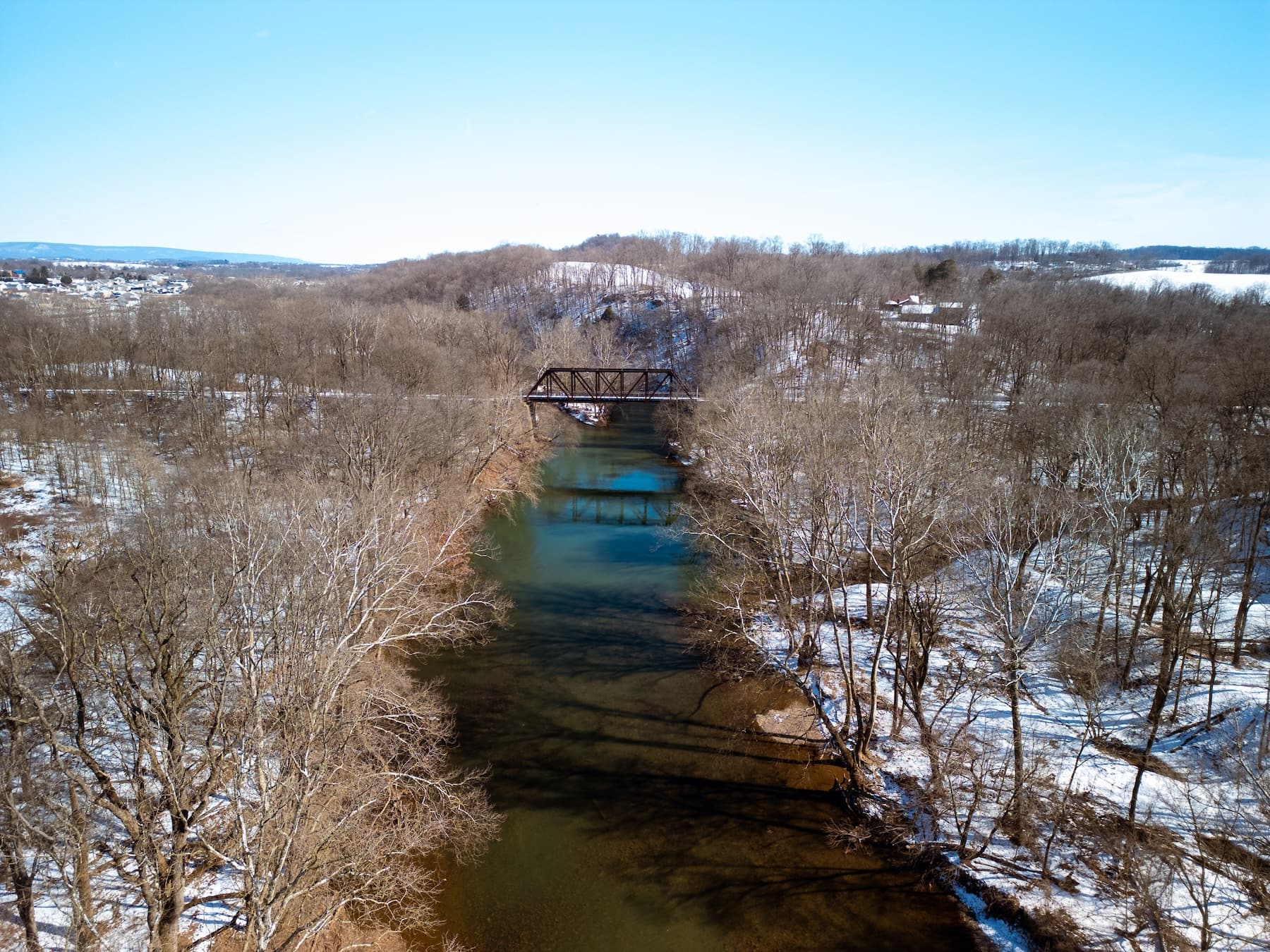Andy Zimmerman has his ear to the ground — literally.
Early every morning, Zimmerman tunes in to 155 below-ground sensors installed by the City of Lebanon Authority (COLA) to listen for water leaks. A subtle shift in what the sensor has recorded is — ahem — noteworthy.

“Anything water-related, the system hears, and it shows up on a map of the distribution system,” said Zimmerman, COLA assistant manager for water distribution and head of the leak detection department. “If something shows up red, we check it right away.”
In January, Zimmerman “heard” four leaks, one of which involved a water main owned by COLA while the others were leaks in property owners’ pipes. As of the first three weeks of February, all was quiet.
Occurring at 500 Hertz, the sound emanating from the sensors is steady and suggestive of “green noise,” which has been described as similar to ocean waves. While the untrained ear is unlikely to register changes in pitch, Zimmerman is attuned to when the pitch increases — as that indicates a possible leak.
Confirmation of a leak requires a trip to the street with a ground microphone to pinpoint the problem, Zimmerman said.
COLA’s water distribution system includes about 100 miles of cast-iron pipes, some of which date from the 1940s, some of which are even older, said COLA executive director Jon Beers.
Because of their age, they are prone to cracking and breaking. COLA annually replaces at least 3 miles of those pipes, he added.
Sensors have been strategically placed to monitor the oldest infrastructure in hopes of avoiding the bigger issues that leaks can cause — namely, sinkholes or street collapse. Besides the 155 permanent below-ground sensors, COLA also has about a dozen that can be moved.

Taken together, the sensors are listening to about 15 percent of COLA’s distribution system, Zimmerman estimated.
While the sensors aren’t visible, they can be seen. A blue lid on a street’s water valve box indicates a sensor.
Public water systems need to report “unaccounted for” water — that is, the amount between water withdrawn from a source and water consumed as tracked by meters. Nationwide, public water systems have an average of about 14 percent of unaccounted for water, according to the Environmental Protection Agency.
Twenty percent or less is typical for Pennsylvania public water systems, according to state Department of Environmental Protection spokesman John Repetz.
Prior to the installation of the leak detection sensors in 2019, COLA’s loss had run between 30 and 35 percent of the water flowing throughout its distribution system or about 3 million gallons a day, Beers said previously.
Read More: City of Lebanon Authority board plans $27.9M wastewater plant improvements
With the equipment, COLA has brought the leakage to below 20 percent, or about 1 million gallons per day, which mostly returns to the aquifer, according to Beers. Since the deployment of the equipment, COLA has identified and repaired 104 leaks, including those which occurred in January of this year.
COLA intends to continue addressing water leaks. This year about 50 more sensors are on tap to be installed, Zimmerman said.
“We can react much more quickly when the sensors detect a leak — 95% of the time, they catch a leak that we didn’t know was there,” Zimmerman said. “Catching It quickly means less disruption of service, less treated water loss and less invasive and costly restoration.”
Questions about this story? Suggestions for a future LebTown article? Reach our newsroom using this contact form and we’ll do our best to get back to you.

Be part of Lebanon County’s story.
Cancel anytime.
Monthly
🌟 Annual
- Fewer ads
- Member newsletters
- Exclusive events
- All monthly benefits
- Most popular option
- Make a bigger impact
Already a member? Log in here to hide these messages
Local journalism is essential to democracy. LebTown keeps you informed about decisions that affect your daily life in Lebanon County. Join our community of supporters with a monthly or annual membership, or make a one-time contribution to strengthen local news. Cancel anytime.


































